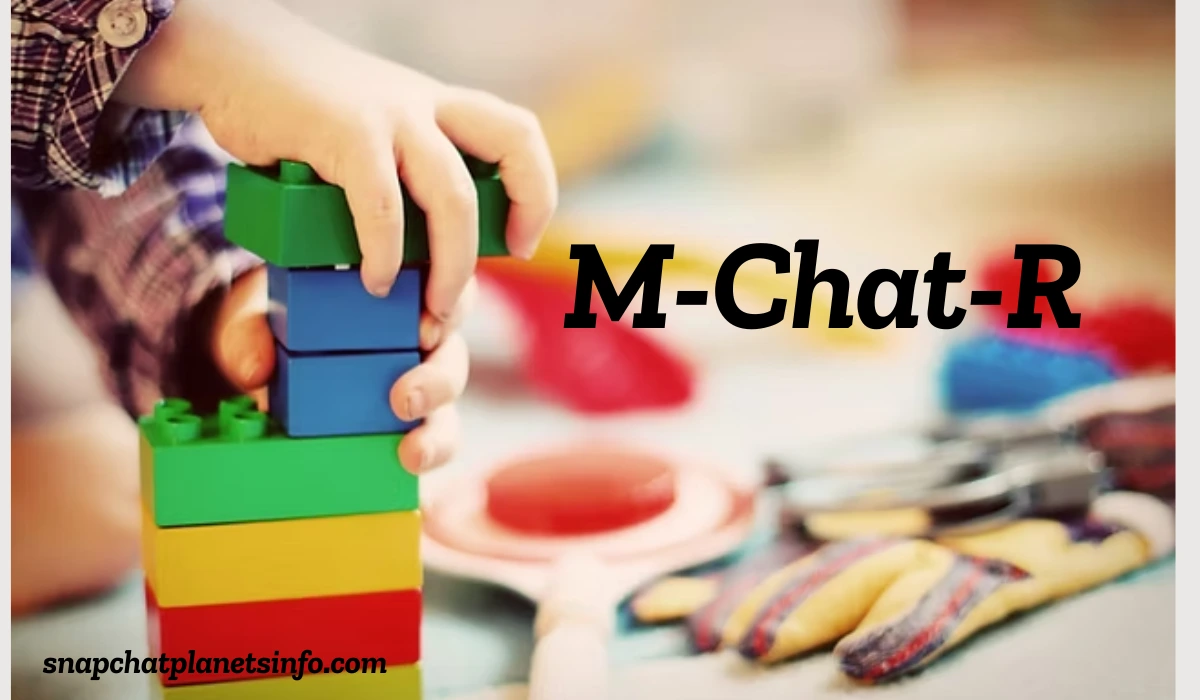The Modified Checklist for Autism in Toddlers, Revised (M-CHAT-R) is a developmental screening tool designed to identify early signs of autism spectrum disorder (ASD) in children between 16 to 30 months of age. This screening tool plays a crucial role in early diagnosis, allowing for timely intervention that can greatly improve a child’s developmental trajectory.
What is M-CHAT-R?
The M-CHAT-R is a questionnaire consisting of 20 simple questions that parents or caregivers answer based on their child’s behavior. These questions are straightforward, focusing on how a child responds to certain social cues and interacts with their environment. For example, questions might ask if your child responds when called by name or if they engage in pretend play.
This screening tool is not a diagnostic instrument. Instead, it helps identify children who may benefit from further, more detailed evaluations. Early identification is key in managing autism, and M-CHAT has become a widely trusted tool among pediatricians and healthcare professionals.
The Importance of Early Screening
Early screening with tools like M-CHAT-R is vital because autism spectrum disorder manifests in the early stages of a child’s life. Detecting these signs early can lead to early intervention, which is known to significantly improve outcomes in communication, social skills, and overall development.
Many children may show signs that are subtle and easy to overlook. By answering the M-CHAT questions honestly and based on typical behaviors, parents can help ensure that any developmental delays are caught as early as possible.
Read more: Latest time to ask for coffee chat wso
How Does the M-CHAT-R Work?
The process of completing the M-CHAT-R is straightforward. It usually takes less than 10 minutes to complete and can be administered during a routine pediatric visit or at home. Once the questionnaire is filled out, healthcare providers score the responses to determine the level of risk for ASD.
| Risk Level | Score Range | Recommended Action |
|---|---|---|
| Low Risk | 0-2 | No immediate action, rescreen if concerned |
| Medium Risk | 3-7 | Follow-up screening or additional evaluation |
| High Risk | 8-20 | Immediate comprehensive evaluation required |
If a child falls into the medium or high-risk categories, further assessment is recommended. This may involve a follow-up interview or referral to a specialist for a comprehensive developmental evaluation.
Benefits of Using the M-CHAT-R

One of the key benefits of the M-CHAT-R is its simplicity and efficiency. The questions are easy to understand, and the tool can be quickly administered in various settings. It has also been validated through extensive research, ensuring its reliability in identifying children who may be at risk for autism.
Another advantage is that the M-CHAT helps reduce the number of false positives, meaning fewer children are incorrectly flagged as at risk. This revision has improved its sensitivity and specificity, making it a more accurate screening tool.
What to Do After Taking the M-CHAT-R
After completing the M-CHAT-R, it is important to discuss the results with a healthcare provider, even if the score indicates low risk. If there are ongoing concerns about a child’s development. A pediatrician may recommend rescreening at a later time or exploring other developmental assessments.
In cases where the score suggests medium or high risk, prompt action is critical. Early intervention services can begin even before a formal diagnosis is made, helping the child develop essential skills during a critical period of growth.
| Key Takeaways | Details |
| Target Age | 16 to 30 months |
| Questionnaire Length | 20 questions |
| Screening Time | Less than 10 minutes |
| Risk Categories | Low (0-2), Medium (3-7), High (8-20) |
| Follow-Up Actions | Further evaluation or early intervention if needed |
M-CHAT-R vs. M-CHAT-R/F
The M-CHAT-R/F is an extended version of the M-CHAT, incorporating a follow-up interview to clarify responses that may be ambiguous. This additional step helps reduce unnecessary referrals by confirming whether initial concerns are consistent over time. Healthcare providers often use the M-CHAT-R/F to ensure that children who truly need further evaluation are accurately identified.
Accessing the M-CHAT-R
The M-CHAT-R is widely accessible and is available in multiple languages to cater to diverse populations. Many pediatricians include it as part of routine check-ups, but it can also be found online for parents who wish to screen their children at home.
Healthcare providers and clinics can integrate the M-CHAT into their electronic medical records (EMR) systems. Making it easier to track a child’s developmental progress over time. Digital versions of the tool are also available, providing instant scoring and detailed reports that can be shared with specialists if needed.
Common Concerns and Misconceptions
Some parents may worry about the implications of a high-risk score on the M-CHAT. It is important to remember that this tool is a screener, not a diagnosis. A high-risk score simply means that further evaluation is warranted to understand a child’s developmental profile better.
Another common misconception is that only children showing severe symptoms should be screened. However, early signs of autism can be subtle, and even children who appear to develop typically may benefit from routine screening.
Read more: Llmaindex chat_engine restet memory
Frequently Asked Questions (FAQs)
What age should my child take the M-CHAT-R?
The M-CHAT-R is designed for children between 16 and 30 months of age. It is typically administered at 18-month and 24-month well-child visits.
Can I take the M-CHAT at home?
Yes, parents can complete the M-CHAT at home. However, it is important to discuss the results with a healthcare provider for proper interpretation and next steps.
What happens if my child scores high on the M-CHAT?
A high score indicates a potential risk for autism and suggests that a comprehensive evaluation is needed. Early intervention services may also be recommended.
Is the M-CHAT accurate?
The M-CHAT is a validated screening tool with high sensitivity and specificity. While it is reliable, it should be followed by further evaluations for a formal diagnosis.
Conclusion
The M-CHAT-R is a powerful tool that helps identify early signs of autism spectrum disorder in young children. By facilitating early screening and intervention, it plays a crucial role in improving developmental outcomes. Parents and caregivers should view this tool as an important step in supporting their child’s growth and ensuring they receive any necessary services as early as possible.
Understanding and utilizing the M-CHAT can make a significant difference in identifying and addressing developmental concerns early on. If you have any doubts or notice any unusual behaviors in your child, completing the M-CHAT-R and consulting with your healthcare provider can provide clarity and guide you toward the best next steps for your child’s development.
